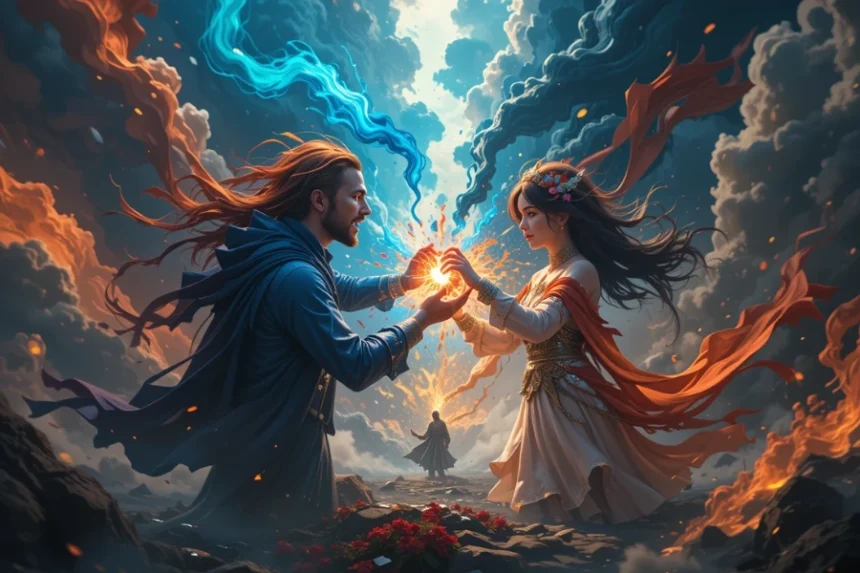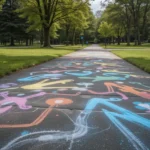Throughout history, art has served not only as a form of expression and storytelling but also as a powerful tool for conflict resolution. The idea of using art as a means to foster understanding, heal wounds, and promote peace is both ancient and contemporary. Art that was used for conflict resolution has played a crucial role in bridging divides, emphasizing shared humanity, and encouraging dialogue among divided groups. This article explores the historical and modern examples of how art has been harnessed to resolve conflicts and foster reconciliation.
The Potential of Art as a Peaceful Medium
Art possesses unique qualities that make it an ideal medium for conflict resolution. It transcends language barriers, appeals to emotions, and allows individuals to express complex feelings that are often difficult to articulate verbally. When used thoughtfully, art can create a safe space for dialogue, reflection, and healing.
In contexts of conflict—whether political, ethnic, or social—art can serve as a neutral ground where diverse parties can see themselves reflected and find common ground. It can challenge stereotypes, promote empathy, and inspire collective action toward peace.
Historical Examples of Art Used for Conflict Resolution
1. Murals and Wall Art in Post-Conflict Societies
One of the earliest and most vivid examples of art used for conflict resolution is the creation of murals in post-conflict societies. After wars or civil unrest, communities often turn to mural art to tell collective stories of trauma, hope, and reconciliation.
For instance, in Northern Ireland, murals in Belfast depict themes of peace and unity. While some murals historically reflected violence and division, many have shifted towards promoting reconciliation and understanding. These visual narratives facilitate dialogue among different communities and serve as ongoing reminders of the importance of peace.
2. Artistic Initiatives During Apartheid in South Africa
During the apartheid era, art played a vital role in resisting oppression and promoting social change. Artists used paintings, poetry, and theatre to challenge the systemic racial segregation and inspire hope for equality. Notably, Augusto Boal’s “Theatre of the Oppressed” evolved into a means of empowering and fostering community discourse.
Post-apartheid, art initiatives like the Nelson Mandela Metropolitan Art Museum have emphasized artworks that promote forgiveness, reconciliation, and national unity, symbolizing how art can be a healing force after conflict.
3. The Peace Walls or Murals in israel and Palestine
Over decades of conflict, especially between Israelis and Palestinians, art has emerged as a form of communication and hope. The Peace Walls and murals scattered across cities in Israel and Palestine depict messages of coexistence, peace, and shared histories.
Though these walls physically divide communities, the art on them often serves as a dialogue in itself—challenging perceptions, humanizing the “other,” and opening space for potential reconciliation.
Modern Examples of Art for Conflict Resolution
1. Community Art Projects in Post-Conflict Settings
Recent decades have seen numerous community-led art projects designed explicitly to foster dialogue and understanding. These projects frequently entail performances involving opposing groups, cooperative murals, or sculptures.
For example, in Colombia, after decades of civil conflict, art programs have brought together former fighters and community members to create murals and sculptures that tell shared stories of pain and hope, encouraging mutual understanding.
2. Art Therapy in War Zones
Art therapy has become an important tool for conflict resolution, especially among children and trauma victims in war zones. Facilitated by professionals, art therapy helps individuals process trauma, express emotions, and regain a sense of agency. This process can be crucial in rebuilding trust and community cohesion.
In war-affected regions like Syria and Iraq, art therapy workshops have helped survivors and displaced persons find healing and work towards rebuilding their communities.
3. International Cultural Exchanges to Promote Peace
Global initiatives that facilitate cultural exchanges often include art components aimed at fostering peace. Art exhibitions, joint performances, and cultural festivals bring together conflicting communities, encouraging dialogue and mutual appreciation.
For instance, the United Nations has organized art exhibitions with works from regions in conflict, emphasizing shared human experiences and highlighting the importance of cultural understanding in peacebuilding efforts.
Art Forms That Have Been Particularly Effective in Conflict Resolution
Murals and public art projects: Reach broad audiences and serve as ongoing symbols of peace.
Theatre and performance art: Foster empathy and dialogue through role-play and storytelling.
Art therapy and creative expression: Facilitate individual healing and community cohesion.
Cultural festivals and exchanges: Encourage respect and understanding amongst cultures.
Each of these art forms contributes to creating spaces for reflection, dialogue, and reconciliation, making them invaluable tools in addressing and resolving conflicts.
Challenges and Limitations of Using Art for Conflict Resolution
Despite its many potential advantages, art cannot resolve disputes.Challenges include:
Misinterpretation: Art can be subjective, and its message might be misunderstood or rejected by opposing sides.
Vandalism or suppression: Political or hostile groups may vandalize or censor art projects aimed at reconciliation.
Superficial engagement: Art projects may be viewed as token gestures rather than genuine efforts for change if not integrated with broader peacebuilding initiatives.
Despite these challenges, when integrated thoughtfully into comprehensive peace efforts, art remains a potent catalyst for social healing.
Conclusion: The Enduring Significance of Art in Conflict Resolution
Art that was used for conflict resolution has a long and meaningful history, demonstrating its capacity to heal wounds, challenge perceptions, and promote understanding. From murals in post-war societies to community-led projects and art therapy in war zones, art continues to serve as a bridge where words often fail.
As conflicts persist around the world, integrating art into peacebuilding and reconciliation strategies offers hope for more empathetic, inclusive, and sustainable solutions. Its universal language connects hearts and minds, making it an enduring and essential element of conflict resolution efforts.



